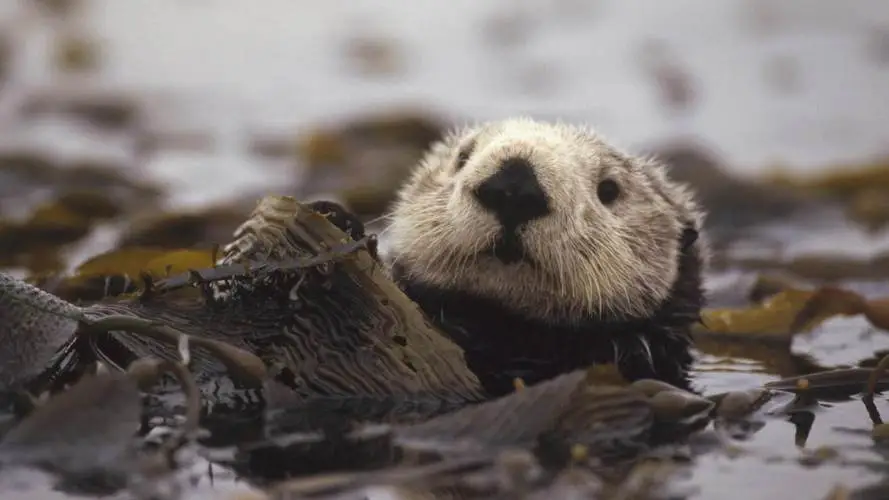The reintroduction of sea otters and their impact on the restoration of California marshland is a compelling subject that highlights the intricate balance of ecosystems and the potential for natural interventions to mitigate environmental degradation.
The recent study, as reported by the Associated Press, sheds light on the crucial role played by sea otters in curbing erosion and preserving the delicate marshland habitat.
Sea otters, known for their voracious appetites, play a pivotal role in maintaining the ecological equilibrium of their habitats.
Their predation on the striped shore crab, a primary culprit in the degradation of marsh banks, has been identified as a key factor in the restoration of the tidal estuary near Monterey, California.
By consuming these crabs, which are responsible for burrowing and damaging the roots of marsh grass pickleweed, sea otters have effectively mitigated the destructive impact of these crustaceans on the stability of the marshland.
Brent Hughes, a marine ecologist from Sonoma State University and co-author of the study, emphasized the detrimental effects of unchecked crab populations on the integrity of marsh banks, likening their activity to creating “Swiss cheese” landscapes that are susceptible to collapse during severe weather events. T
he return of sea otters to the region has been instrumental in slowing down erosion to natural levels, offering a promising solution to the ecological challenges posed by the decimation of sea otter populations in the past.
The historical context of sea otters in California further adds depth to the significance of their resurgence. The 19th century fur trade led to a drastic decline in sea otter populations, resulting in a global impact that stretched from Alaska to California, as well as into Russia and Japan.
With as few as 2,000 individuals remaining at one point, the plight of sea otters underscored the far-reaching consequences of human activities on the natural world.
However, concerted efforts to implement hunting bans and restore sea otter habitats have yielded positive outcomes, enabling the gradual recovery of their populations and the expansion of their former range.
The return of sea otters to Elkhorn Slough, particularly through initiatives such as the Monterey Bay Aquarium’s program for raising and releasing orphaned sea otters, has been pivotal in revitalizing the estuarine ecosystem and mitigating the detrimental effects of crab-induced erosion.
The successful case of sea otters in California serves as a compelling testament to the resilience of ecosystems and the potential for targeted conservation efforts to yield tangible benefits.
It also underscores the interconnectedness of species within an ecosystem and the cascading effects of population declines and recoveries on the broader environmental landscape.
In conclusion, the resurgence of sea otters and their role in mitigating erosion in California marshland exemplifies the intricate dynamics of ecological restoration and the potential for natural interventions to address environmental challenges.

This study not only highlights the resilience of sea otters in the face of historical adversity but also underscores the profound impact of their presence on the stability and vitality of coastal ecosystems.
As we continue to navigate complex environmental issues, the success story of sea otters stands as a beacon of hope, emphasizing the importance of conservation efforts and the preservation of biodiversity for the well-being of our planet.
In a recent study, researchers undertook an analysis of historic erosion rates dating back to the 1930s in order to evaluate the influence of the return of sea otters.
In addition to this historical analysis, the researchers implemented an experimental approach by erecting fenced areas to exclude otters from certain creek sections for a period of three years.
Remarkably, these fenced-off creek banks experienced significantly accelerated erosion rates, providing compelling evidence of the impact of sea otters on the surrounding ecosystem.
This study aligns with previous research on the reintroduction of top predators into various habitats, such as the well-known case of gray wolves being reintroduced to Yellowstone National Park.
These instances have demonstrated the pivotal role that such predators play in maintaining ecosystem stability.
For example, the presence of wolves in Yellowstone National Park led to a reduction in the populations of elk and moose, which in turn mitigated the consumption of saplings and subsequently slowed riverbank erosion.
While many previous studies in this field have relied primarily on observational data, the meticulous design of the latest research has left no room for doubt regarding the profound impact of sea otters.
Johan Eklöf, a marine biologist from Stockholm University who was not involved in the study, emphasized the significance of this approach in unequivocally establishing the influence of sea otters on the ecosystem.

Furthermore, additional research has highlighted the role of sea otters in fostering the regeneration of kelp forests by regulating the population of sea urchins, which are known to consume kelp.
This underscores the remarkable foraging capabilities of sea otters, as emphasized by Brian Silliman, a coastal ecologist from Duke University and co-author of the study.
The findings of this research not only contribute to our understanding of the intricate relationships within ecosystems but also shed light on the pivotal role of sea otters in maintaining ecological balance.

